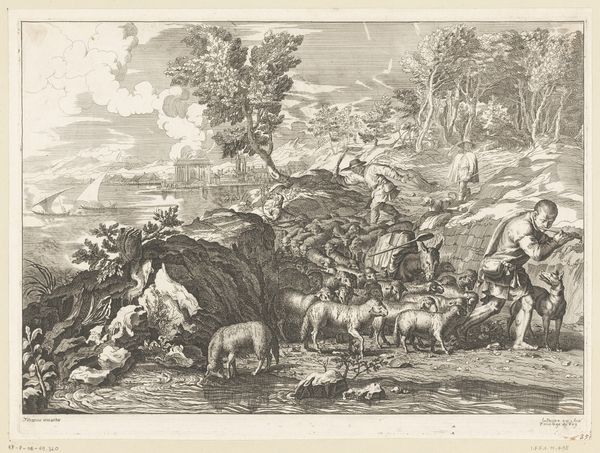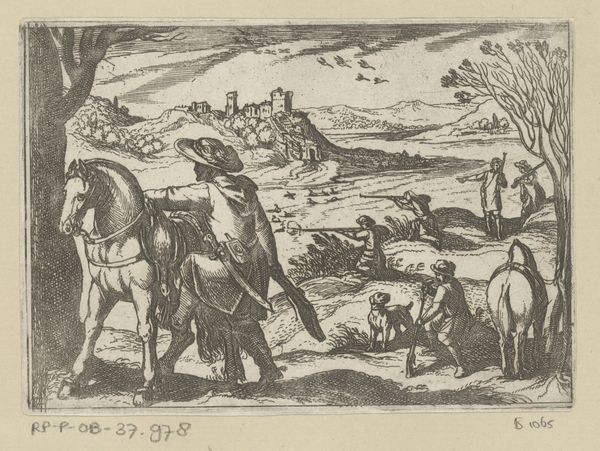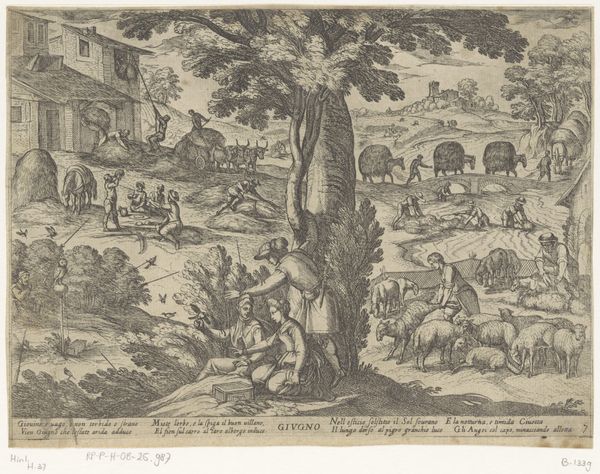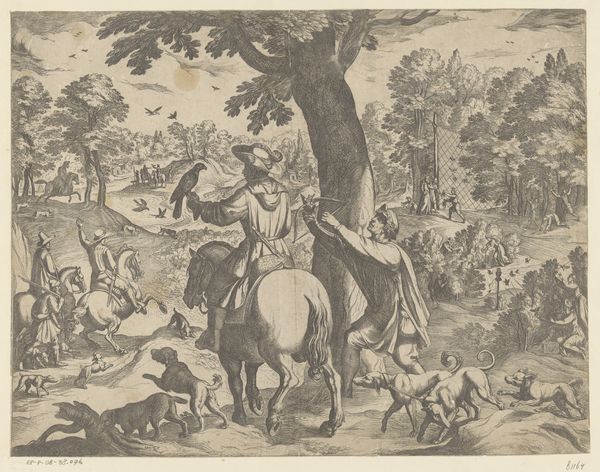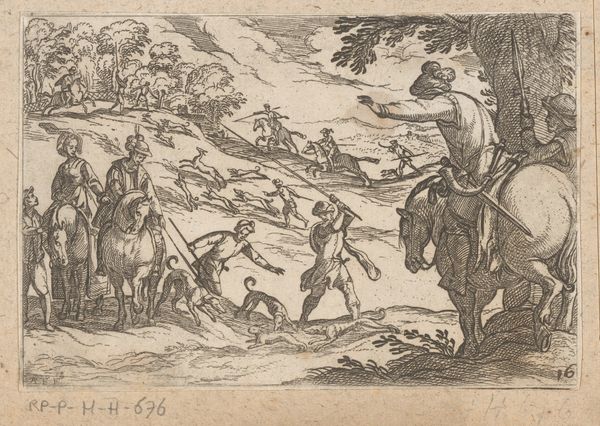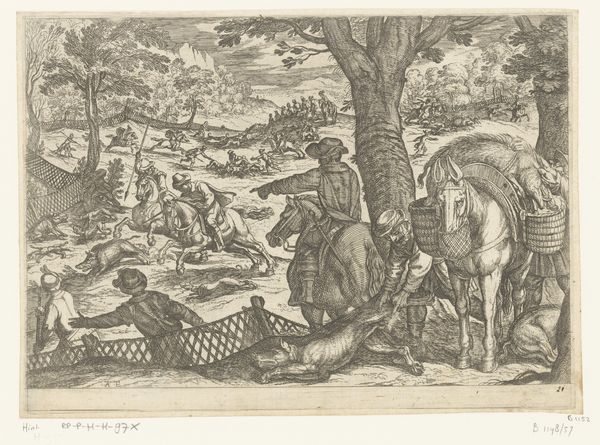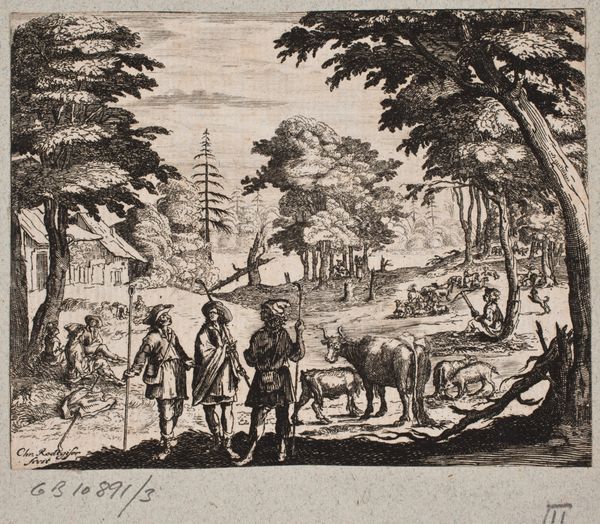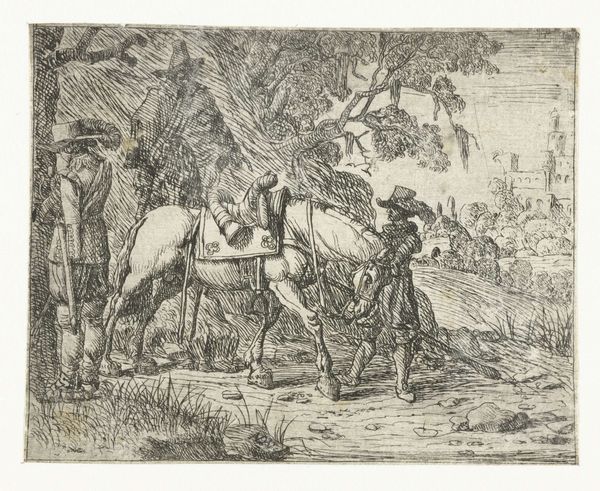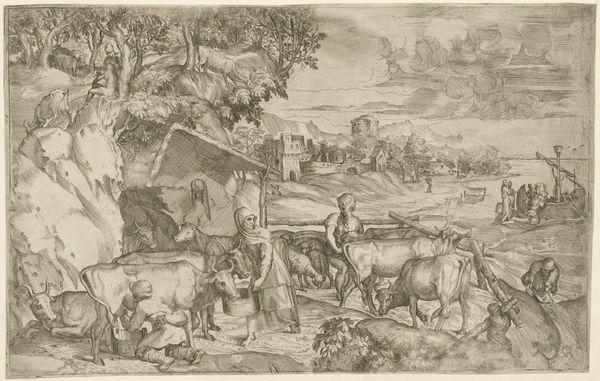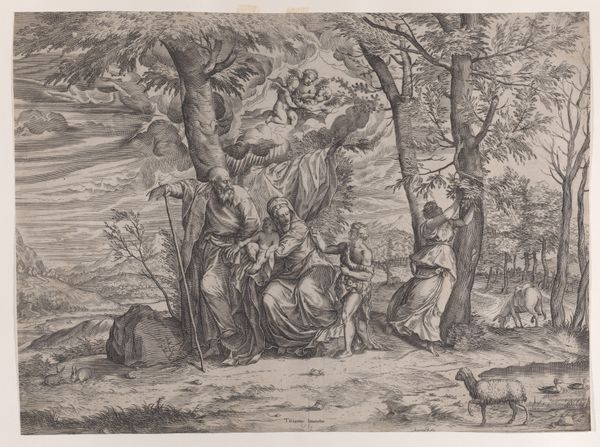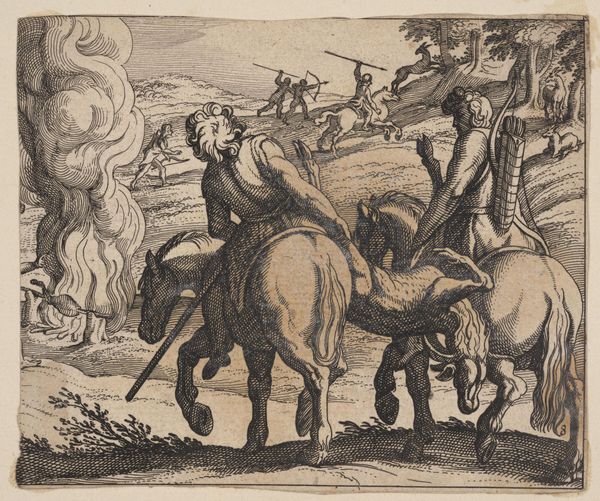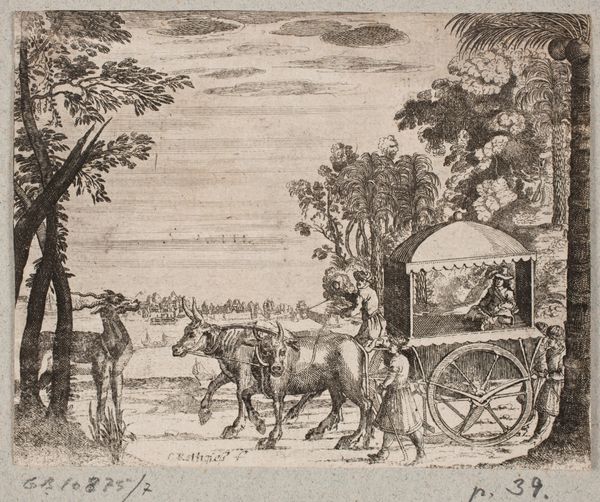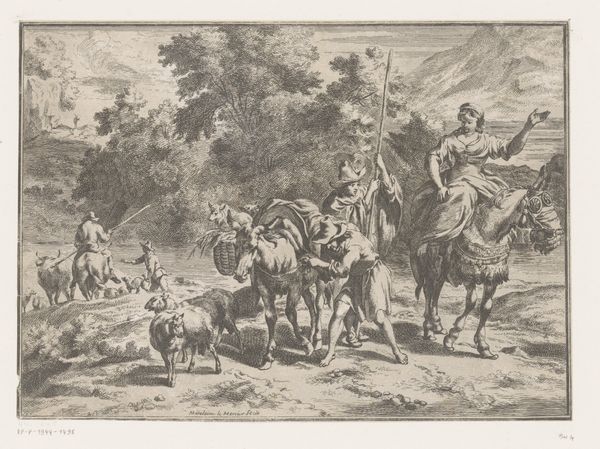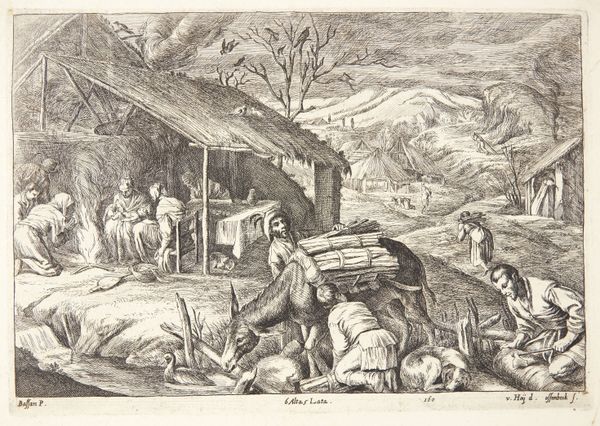
drawing, print, engraving
#
drawing
#
allegory
#
pen drawing
# print
#
pen illustration
#
pen sketch
#
old engraving style
#
landscape
#
horse
#
men
#
northern-renaissance
#
engraving
Dimensions: Sheet: 8 3/8 x 11 15/16 in. (21.2 x 30.4 cm)
Copyright: Public Domain
Editor: This engraving is called "The Triumph of Time" by Philips Galle, dating back to 1574. It's incredibly detailed; the scene feels both chaotic and deeply symbolic. What stands out to me is the way time is portrayed – as a destructive force, perhaps? What do you see in this piece, Professor? Curator: The piece absolutely reflects anxieties of its era. Galle, working during a period of significant social and religious upheaval in Northern Europe, captures a palpable sense of the relentless march of time and its impact on human endeavors. Time here isn’t just passing, it’s actively dismantling culture, symbolized by the discarded musical instruments and tools strewn across the foreground. Note the figure of Time in the center, crushing objects under the wheels of his chariot. Editor: It's interesting to see the discarded instruments; they add another layer to the chaos. The Angel in the sky seems almost indifferent. Who do you think was the intended audience and what would this imagery represent for them? Curator: The intended audience was likely a learned, upper-class segment of society familiar with classical allegories and humanist ideas. The imagery serves as a *memento mori*, a reminder of mortality and the transience of earthly achievements. This resonated with the political instabilities of the time, perhaps encouraging a reflection on the value and the future of their society amidst the turmoil. How might public displays like this work have shaped discourse about morality? Editor: That’s a really interesting point. Considering the political landscape and this piece acting as a ‘reminder’, this imagery creates an even richer interpretation! Curator: Precisely! Analyzing art within its specific historical and socio-political context offers such insights. This engraving isn't merely a depiction but an active participant in the cultural conversation of its time, warning against earthly obsession.. Editor: This piece and your insights give such a clear context to understanding how artists respond to their changing world and use symbolism in artwork. I'll definitely remember that when looking at pieces from this period!
Comments
No comments
Be the first to comment and join the conversation on the ultimate creative platform.
